Bonnie Wilpon
A Look at Leather Postcards
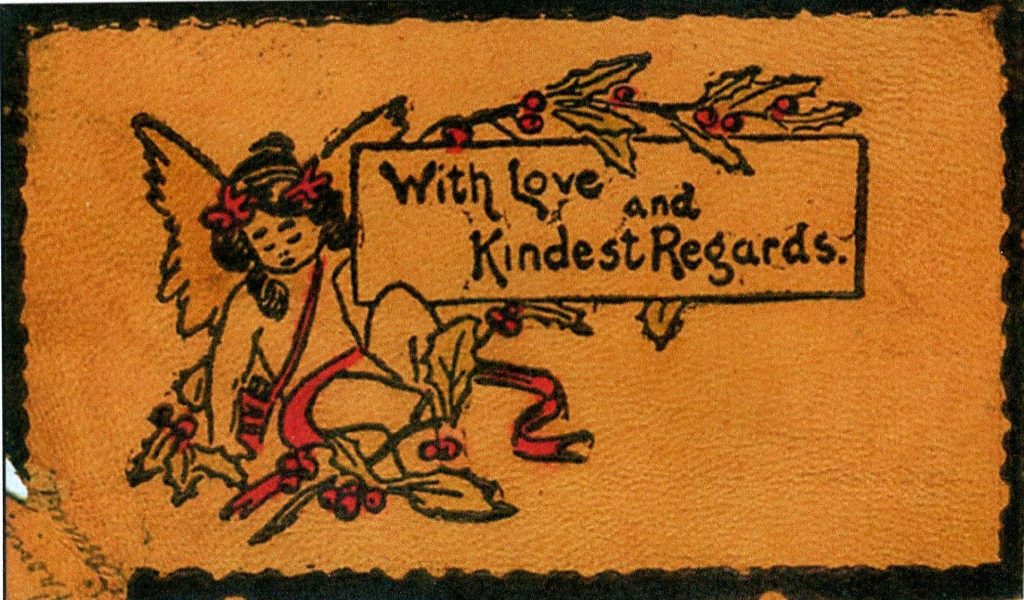
This sweet angel on a leather postcard was mailed in 1907. Like most leather cards, it is slightly smaller than a standard card, measuring about 4½ inches by 2¾ inches. Made of deerskin, it is soft and supple. The red color would have been added after the image was completed.
What do you do when faced with lots of competition? Make something completely different! That’s what publishers did during the postcard boom of the early 1900s. All kinds of interesting materials were used to pique the interest of buyers. One of these different materials was leather.
Starting in 1903, postcards made of leather were decorated by pyrography (literally “fire-writing”). Also known as pokerwork, it involved decorating the postcards using the tip of a sharp tool heated by fire. Surprisingly, it was a popular craft among ladies. Designs were burned into deerskin and color was often applied afterward. While the leather in newer postcards is often stiff, the leather of the pre-1915 era is very thin and soft.
About 1909, the post office banned the mailing of leather postcards because they were getting hung up in the new sorting machines. But dedicated collectors still sent them using envelopes. In later years when postal machinery became sturdier, the cards were again permitted in the mail. They can still be purchased in souvenir shops, especially in the American West.
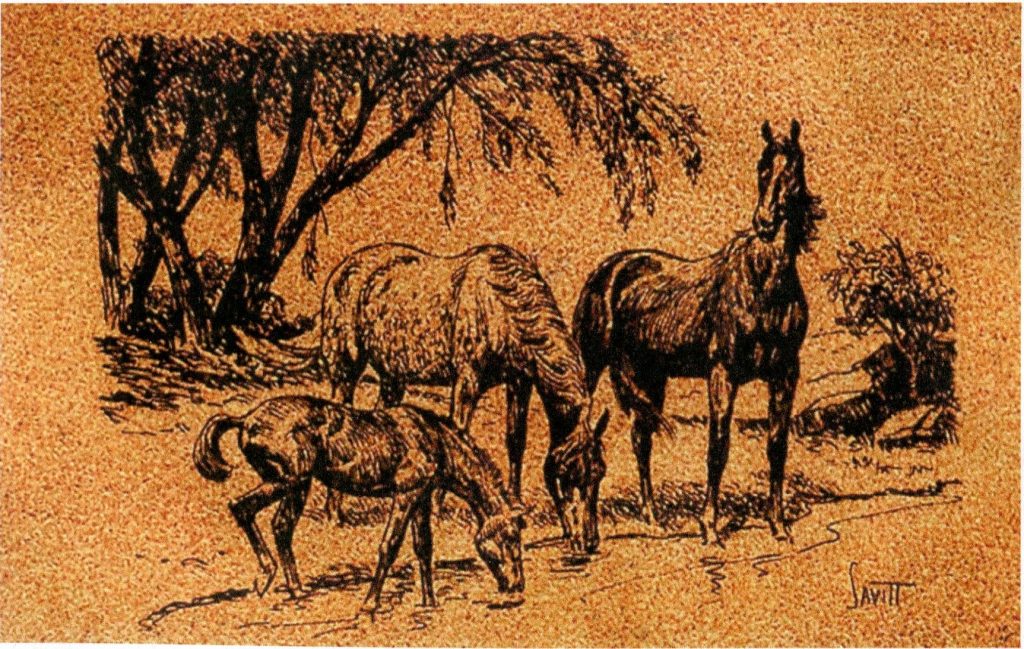
This leather postcard, much stiffer than the ones of the early 1900s, was mailed to me in 1984. It was a Dallas, Texas, souvenir purchased in an arts and crafts mall.
Leather postcards were produced in huge numbers and covered just about every topic imaginable, from Sunbonnet and Teddy Bear days-of-the-week sets to college girls and pennants; from Indians and Santas to animals and main streets.
Some came as a series to enable the sender to mail one card after another to complete a puzzle or a story. Some leather cards had holes punched around their borders to encourage collectors to add fringe or to gather a large number and stitch them together with rawhide to make a stuffed pillow or wall hanging.
The November (1905) issue of the Dry Goods Reporter pictured a pillow cover made of 24 leather postcards that had been stitched together. The publication encouraged stores selling postcards to display something like this in their windows to increase sales.
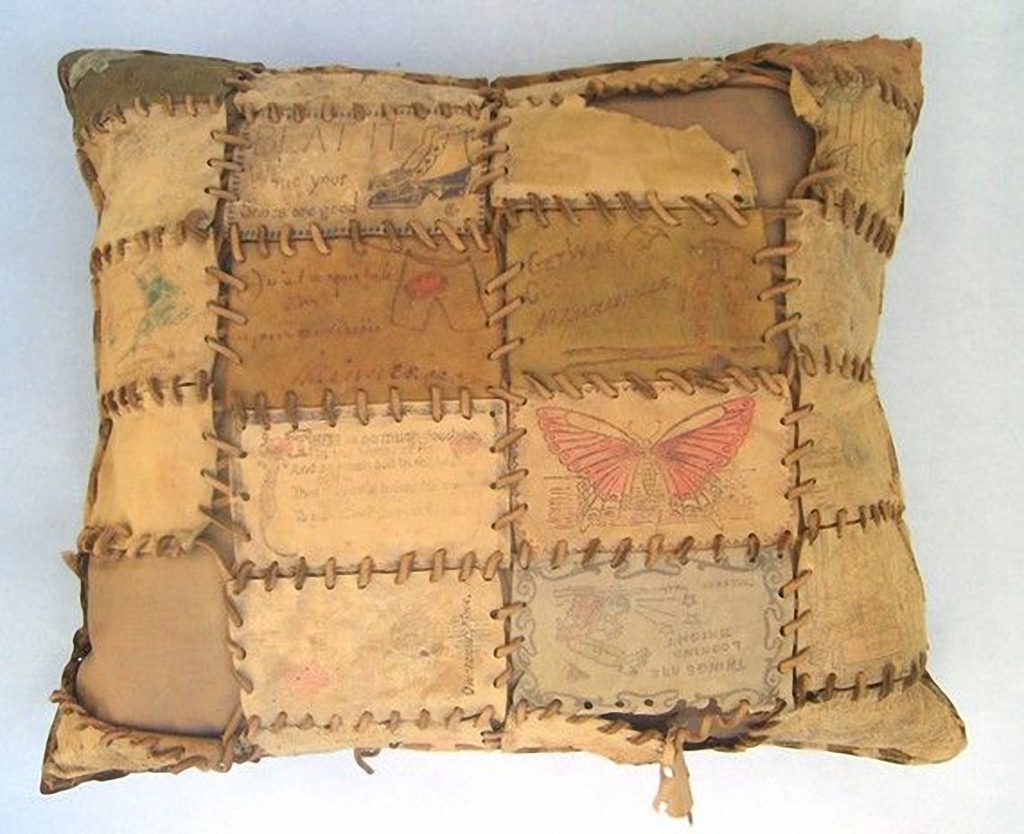
Here are some leather postcards stitched together into a pillow cover. Certainly a great decoration for your cabin in the hills.
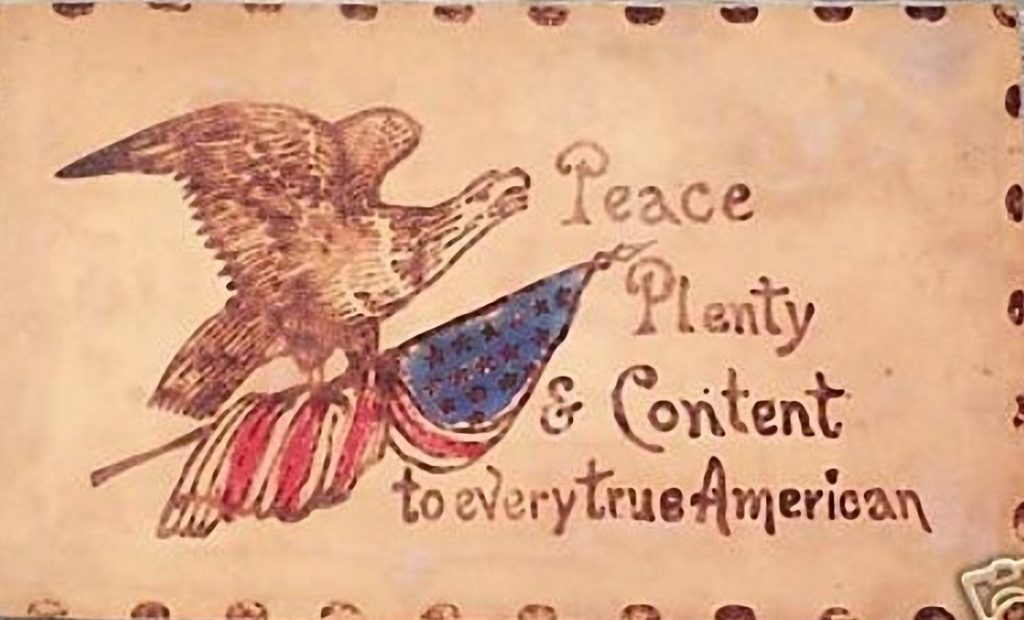
This awesome unused leather postcard featuring an American eagle and flag is a premium example of its type.
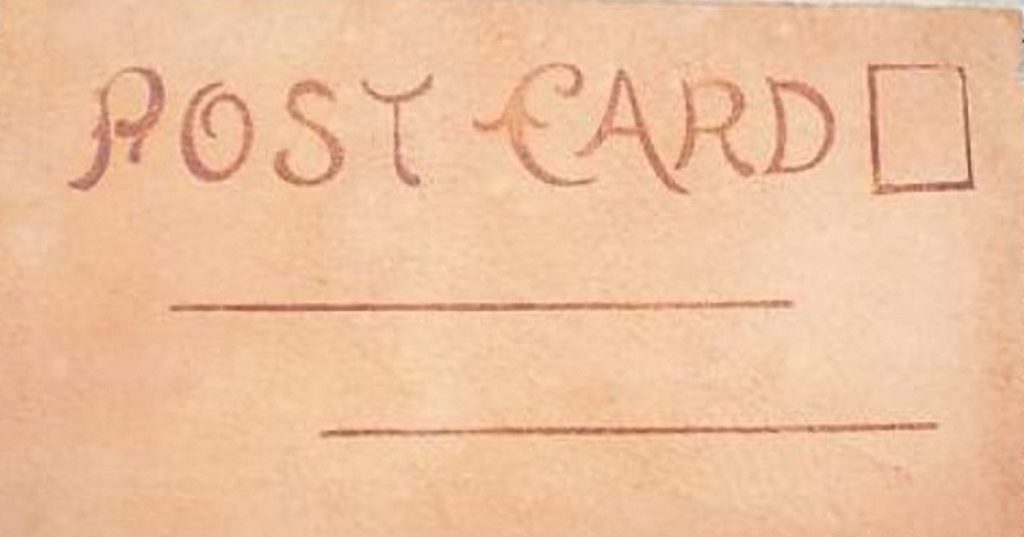
The back of the eagle and flag postcard provides lined spaces for the addressee.
One of the most popular leather postcard artists was W. S. Heal, whose successful postcards showed the humor of frontier living and stereotypes of the era. Watch for his signature [imprint], it will raise the value of the postcard.
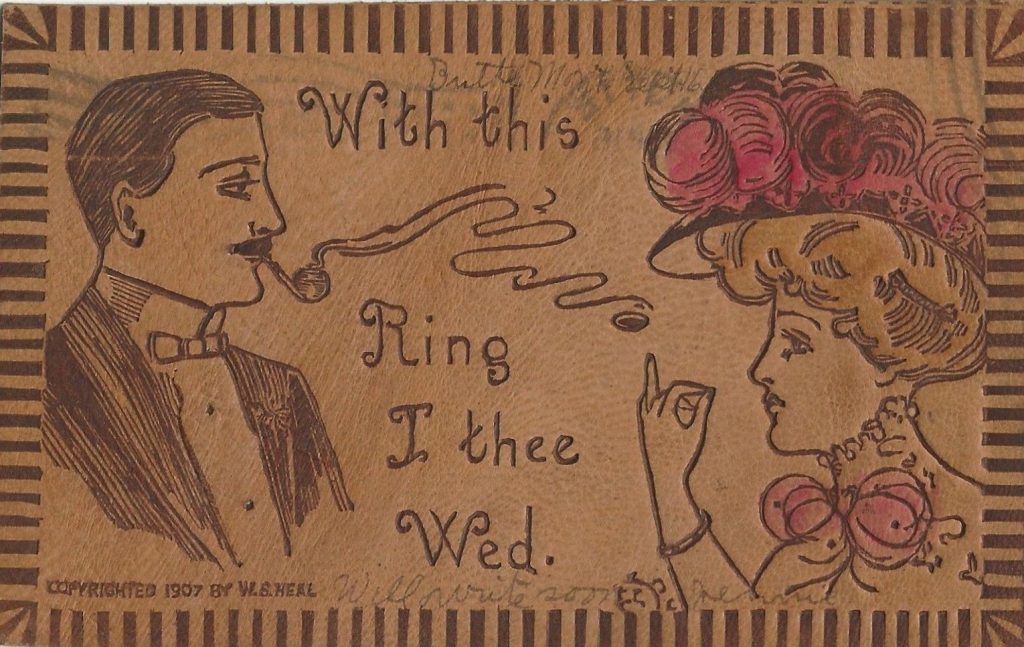
W. S. Heal romantic card, copyright 1907.
Most of the pre-1915 cards show comic images and are easily collected. However, outstanding leather cards – with vivid colors, political themes or die-cut shapes – can sell for double digits or more.
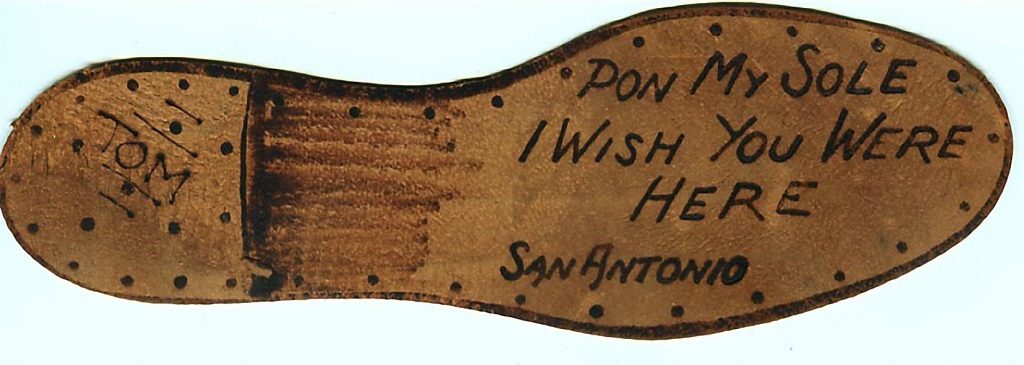
This card combines the fun of leather puns with a die-cut shape. It was mailed in 1905 to Tom’s sweetheart.
Leather postcards made before 1915 are not hard to find and many dealers have large numbers of them. Also, a good selection can be found in online auctions.
Several dealer sites list even common leathers for above-market prices, so don’t overlook the bidding sites when collecting leathers. On those sites, I’ve seen pre-1915 leathers selling for reasonable amounts. Be aware that some leathers showing the ancient religious icon from Eurasia cultures, political images, and university pennants selling above the average price.
Some dealers believe, for a variety of reasons, that leather postcards can be difficult to sell. Those dealers need to find the collectors who specialize in novelty postcards and cards made of uncommon materials.
If you have some leathers in your collection be sure to store them in acid-free plastic sleeves and don’t compress them tightly.
Interesting. I always thought the leather cards were made of goat skin.
There are also postcards printed on tan paper with red ink and they were made to look like leather cards. The leather cards must have sold at a premium price over the cost of regular cards.
Leather cards were so interesting that they have been reproduced like this. I’ve seen some on heavy tan or brown paper too. Enjoy – Bonnie
I wouldn’t be surprised if some were. Enjoy – Bonnie
Bonnie,
Thanks for the info! I learned things about leather cards that I was not aware of. I have a leather postcard in my postcard exhibit. Your information will add to the exhibit page. Keep up the good work! Could you send me the write-up? I could not print it from the Postcard History site. I am a member of the Tampa Sunshine Postcard Club.
Hi Brenda – I’ll be happy to try to send you a copy if I can. I’m away on vacation at the moment but will make a note to do it when I get home. It’s fun to find an article like this when you actually have one in your collection. Enjoy – Bonnie
I have pro at about 30 leather postcards mostly from 1903-1906. I also have a lot of old
Postcards from the same time showing pictures of New York parks, New London Ct.. etc.
Hi Bonnie I have found what I believe to be leather post cards but I’m having a hard time researching them
Hi Bonnie, are you still looking for the leather post card for ” levee-St Louis, M0. Found one in my brother’s collection.
I have lil less then 20 leather post cards who n where can I sell them n for how much.
I’m selling mine on Ebay between 30 / $50.00.
I think you should revise your site to reflect that leather post cards were made as early as 1902. have one postmarked 1902 with a 2 cent GW stamp on it.